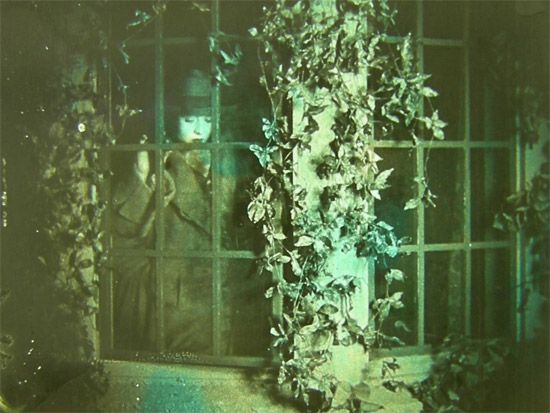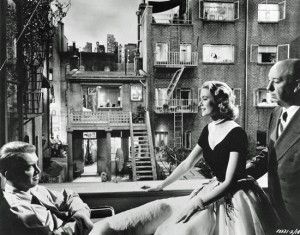For the Love of Film Blogathon III: The White Shadow and Streaming Restored Films Online
Casablanca streaming live on Facebook tonight and read about the opportunity to view a recently restored version of one of Alfred Hitchcock’s first films
/https://tf-cmsv2-smithsonianmag-media.s3.amazonaws.com/filer/20120516030035Rear-window-thumb.jpg)
May 14–18 marks the third annual “For the Love of Film” campaign. Hosted by Marilyn Ferdinand’s Ferdy on Films, Roderick Heath’s This Island Rod, and Farran Smith Nehme’s Self-Styled Siren, the blogathon raises money for specific preservation projects.
The first blogathon helped finance the restoration of two Westerns, The Sergeant (1910), which contains the earliest narrative footage from Yosemite, and The Better Man (1912), a Vitagraph short with tinted intertitles. Both films were rediscovered at the New Zealand Film Archive. Thanks in part to the “For Love of Film” blogathon, they were included in the National Film Preservation Foundation‘s box-set Treasures 5: The West 1898–1938.

Last year the blogathon donated preservation funds to the Film Noir Foundation to restore The Sound of Fury, a 1950 thriller starring Lloyd Bridges and directed by soon-to-be-blacklisted Cy Enfield. Physical restoration of the film will take place next year, and a repremiere is scheduled for the 2014 Noir City 12 festival in San Francisco.
This year the blogathon has selected The White Shadow, another New Zealand restoration project I first wrote about here. Directed by Graham Cutts, The White Shadow is an important early credit for Alfred Hitchcock, who would later become one of cinema’s most significant directors. Film restorer Eric Grayson wrote this on his excellent Dr. Film blog:
We only have the first half of this film that Alfred Hitchcock co-directed. It isn’t really a Hitchcock film, and it isn’t complete, and Hitchcock remembered it as not being very good. Exactly the kind of thing I’d love to see! Why? Because it will show just how Hitchcock developed as a director.
To movie buffs, one of the most frustrating aspects of film preservation is the fact that it’s almost impossible to see the finished products. Archives can restore a feature film, but often can’t show it outside of a museum or festival setting. Donor restrictions on materials, rights issues, the costs of making and shipping prints—all these factors can make it illegal or prohibitively expensive to screen restored titles, or make them available to home markets.
That’s what makes this year’s “For the Love of Movies” blogathon so significant. Rather than fund a restoration (since The White Shadow has already been restored), it is funding access. Once it reaches its goals, the National Film Preservation Foundation will host an online version on its website, complete with a new musical score by Michael Mortilla.

Viewing films online has its drawbacks, but at least it enables people to see what preservationists are doing. Coincidentally, to publicize the Casablanca 70th Anniversary Three-disc Blu-ray + DVD Combo Edition from Warner Home Video, Warner Bros. Digital Distribution is hosting a complimentary screening of the film today on the Casablanca movie Facebook Page at 7:00 p.m. ET and again at 7:00 p.m. PT. You must begin watching Casablanca prior to 9:00 p.m. PT through the film’s Facebook Page. Only one screening per Facebook account is permitted.
Films like Casablanca, Ben-Hur, and Gone With the Wind are first in line for upgrading whenever a new preservation format or standard is established. For instance, Warners released an “Ultimate Collector’s Edition” of Casablanca in 2008. But studios and archives are sitting on thousands of other titles that might not get restored. If you love movies, you should jump at the opportunity to actively target titles you want to preserve and protect.
NFPF director Annette Melville reminded me, “Exhibiting films on the web is far from ‘free.’ The biggest obstacle is paying for the bandwidth to carry the surge in web traffic. We had a wake-up call when a single repatriated film went viral, increasing our web-hosting bill more than 3000%! Clearly to continue on this route, we will need donors committed to increasing film access and willing to support it.”
The goal of “For the Love of Film” blogathon is $15,000, enough to host The White Shadow online for three months. You can donate directly to the NFPF.
Since those participating in the blogathon are supposed to write something about Hitchcock, I’ll add the following. In addition to being one of the medium’s best directors, Hitchcock understood the business of film better than most of his peers. Fairly early in his career, the director obtained artistic control over his projects. For his British titles, he could pick his stories and cast, determine what and how to shoot, and oversee editing. Apart from some budgetary and censorship limitations, films like The 39 Steps (1935) and The Lady Vanishes (1938) look exactly the way Hitchcock wanted them to.

However, Hitchcock didn’t own the films themselves. They belonged to his producers, which is one of the reasons why so many of his British titles had fallen into public domain in the US, and are available here in cheap, badly duped versions.
When he came to the United States, Hitchcock was under contract to David O. Selznick. Their relationship gave Hitchcock access to great stars like Ingrid Bergman and writers like Ben Hecht, but it also limited him to what Selznick wanted to do.
In the 1950s, Hitchcock was still working under contract to studios like Paramount, but he arranged to have rights for certain projects revert to him after a specified time. Rear Window, for example, was released by Paramount in 1954 and rereleased in 1962. Hitchcock obtained control of the rights and film elements in 1967. Unfortunately, he decided to scrap what was considered to be extraneous film and sound elements, and to store the remaining camera negative, separation masters, and sound tracks in a non-air-conditioned warehouse.
Using these materials, Rear Window was reissued in 1970. But when Universal tried to reissue the film again in 1983, the negatives were faded and damaged, and the optical soundtrack could not be used.
Robert Harris and James Katz undertook a new restoration in 1997, this time resurrecting a Technicolor dye transfer process that had been dormant since 1974. During their restoration they got an appreciation of just how brilliant a filmmaker Hitchcock was. For example, there are no dissolves from one scene to another in Rear Window. Instead, Hitchcock would have cinematographer Robert Burks fade to black between scenes. Amazingly, these fades were performed in the camera, not in a lab. Hitchcock was so confident about his timing, pacing, and rhythm that he felt comfortable risking his shot on the set rather than waiting to use a film lab’s optical process.
Hitchcock went on to establish a media empire of sorts, making feature films, producing and hosting a long-running television series, and even adding his name to books and magazines. By doing so, he remains one of the most recognizable directors over 20 years after his death.
Read new Reel Culture postings every Wednesday and Friday. And you can follow me on Twitter @Film_Legacy.
/https://tf-cmsv2-smithsonianmag-media.s3.amazonaws.com/accounts/headshot/daniel-eagan-240.jpg)
/https://tf-cmsv2-smithsonianmag-media.s3.amazonaws.com/accounts/headshot/daniel-eagan-240.jpg)